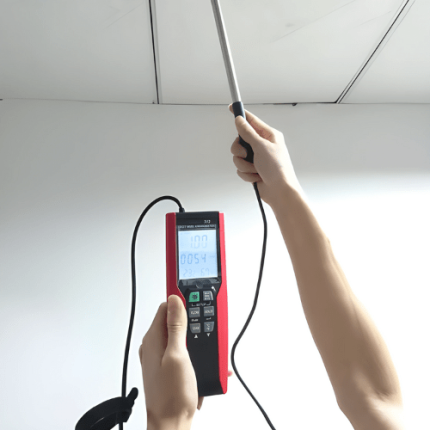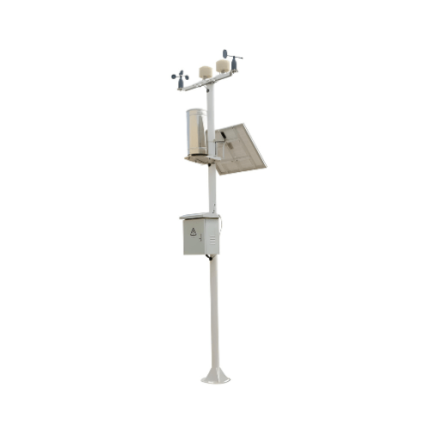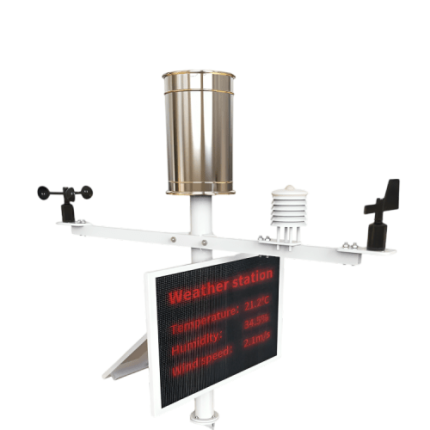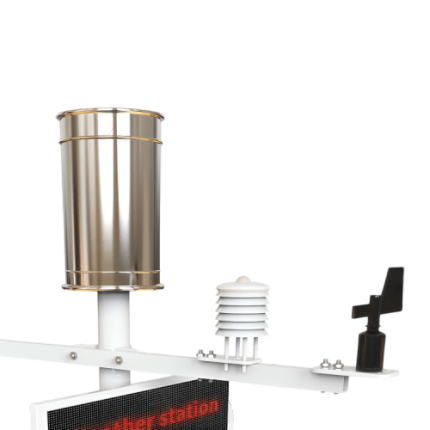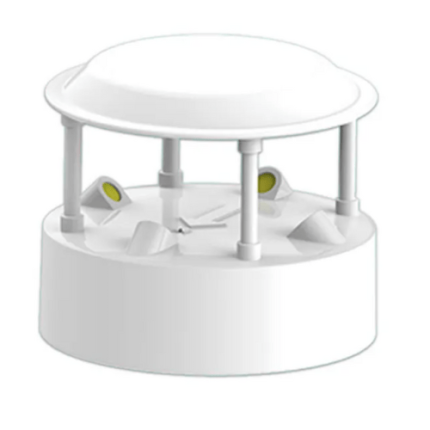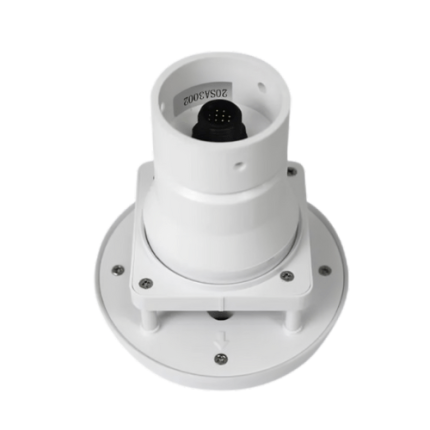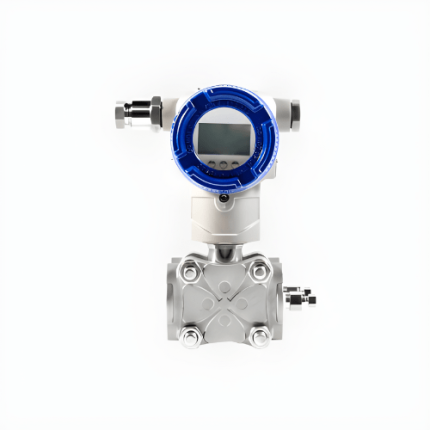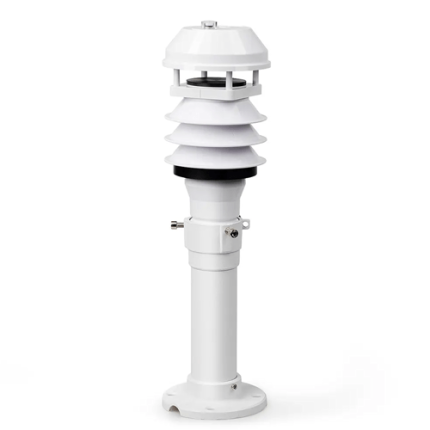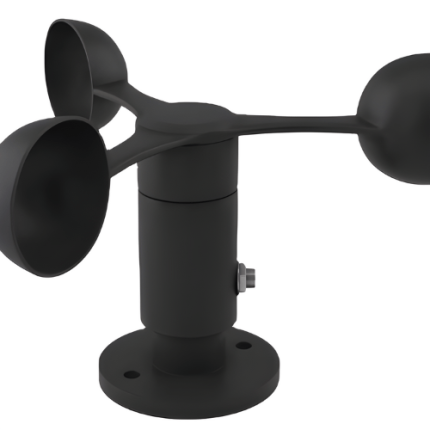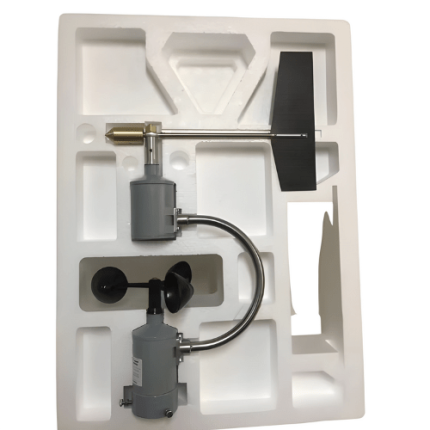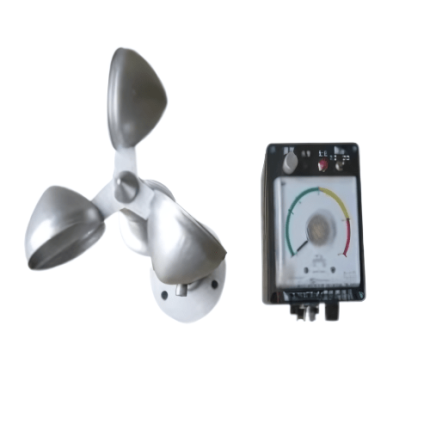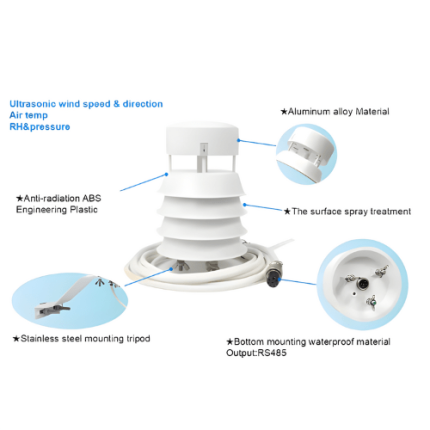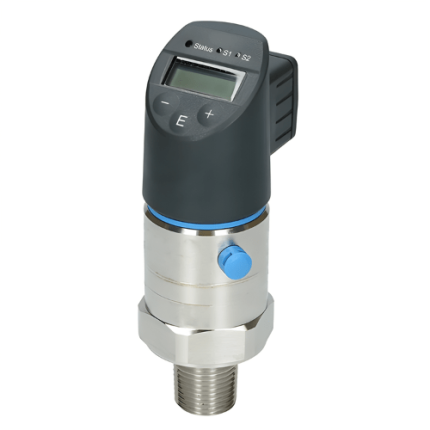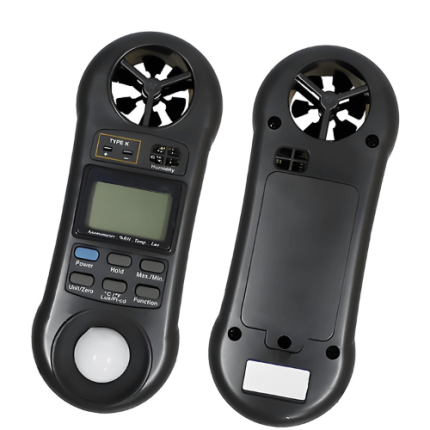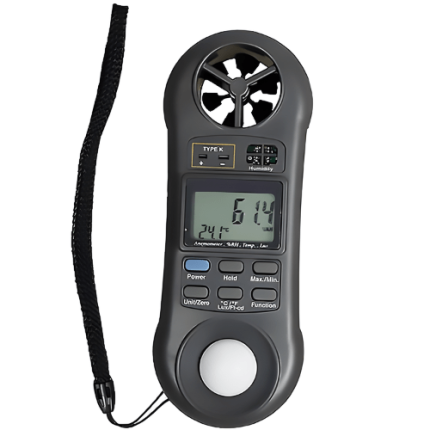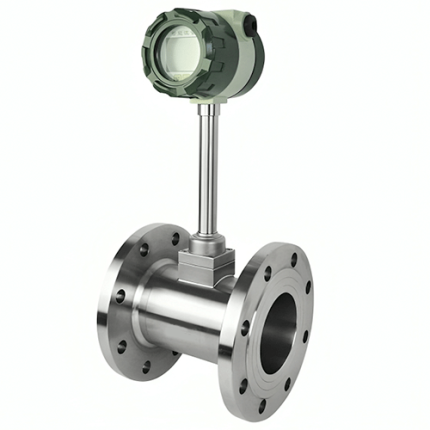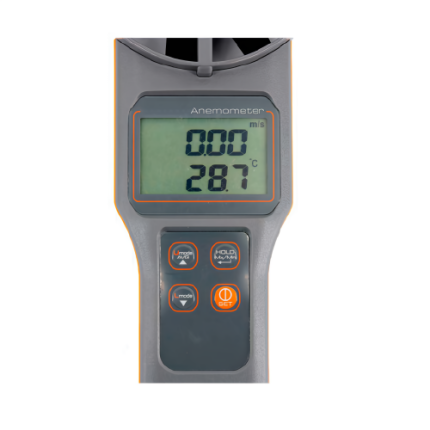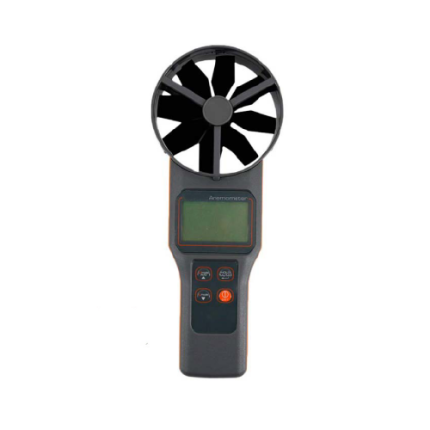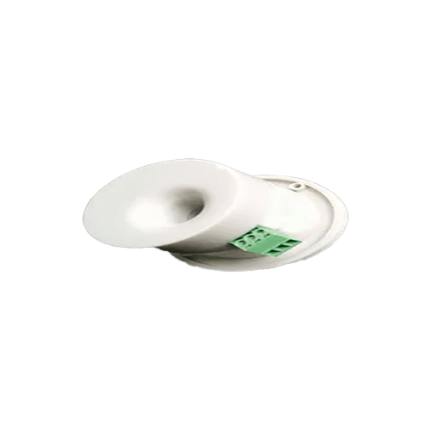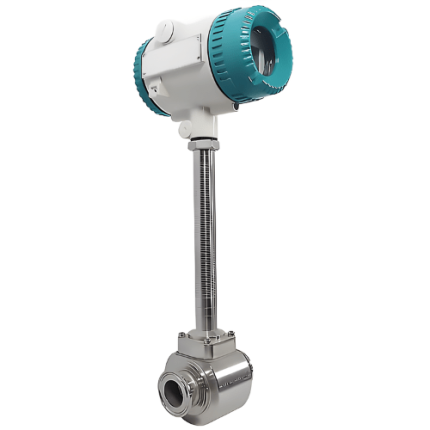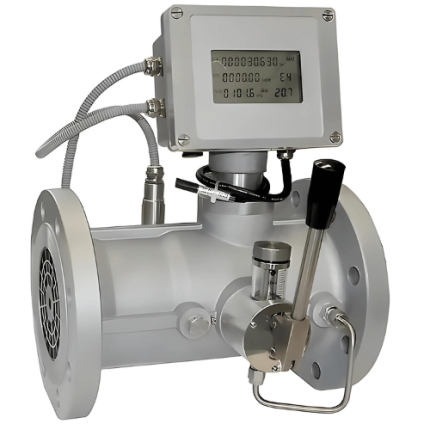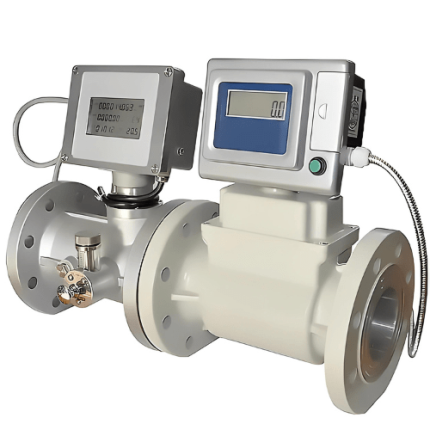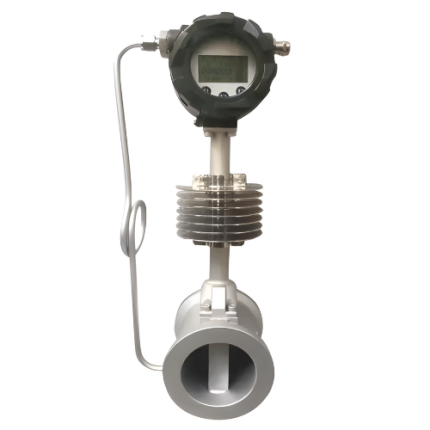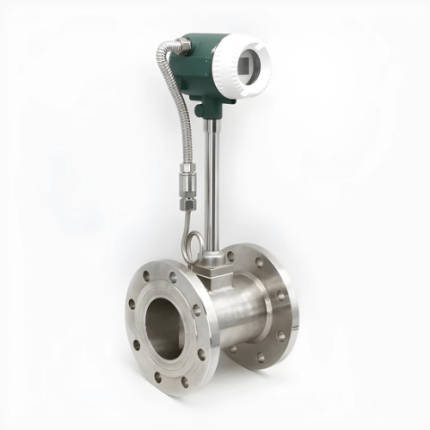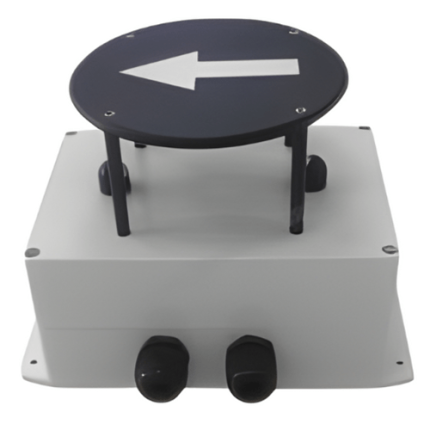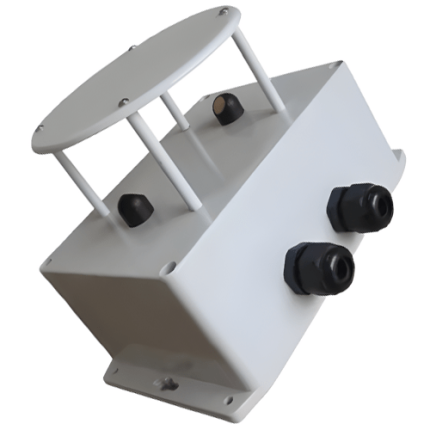Anemometer
GAO’s environmental anemometers are devices used to measure wind speed and direction in the outdoor environment. Our environmental anemometers typically consist of a set of cups that rotate in response to wind speed and a vane that rotates to indicate wind direction. Our environmental anemometers may also include electronic sensors that can transmit data wirelessly to a remote location or have the ability to store data for later retrieval. These instruments are used to collect data on wind patterns and can be used to predict weather conditions, study air pollution dispersion, assess the potential for wind energy generation, and inform the design of buildings and structures that may be impacted by wind forces. They are an important tool for understanding and mitigating the impacts of wind on the environment and human activities.
GAO’s environmental anemometers are composed of cup assembly, vane assembly, sensor assembly, mounting hardware, and power source.
The other common names of anemometers are wind gauges, wind speed meters, wind velocity sensors, airflow meters, wind measurement devices, wind speed indicators, airspeed sensors, wind meters, wind velocity gauges, wind anemographs, wind vanes, and wind speed anemometers.
Air Velocity Flow Anemometer
Automatic Weather Monitoring Anemometer
Digital Weather Monitoring Anemometer
GAO Tek Ultrasonic Wind Speed And Direction Sensor Pressure
GAOTek Output Anemometers Wind Speed Direction Sensor
GAOTek Smart Pressure Transmitter Pressure Gauge
GAOTek Wireless Ultrasonic Industrial Anemometer
GAOTek 3-Cup Anemometer
GAOTek 3-Cup Wind Anemometer
GAOTek 5-in-1 Weather Station With Anemometer
GAOTek Absolute And Gauge Pressure Anemometer
GAOTek Absolute Pressure Transmitter Anemometer
GAOTek Agrometeorological Anemometer
GAOTek Air Compressed Flow Meter
GAOTek Air Compressor Flowmeter
GAOTek Air Flow Anemometer – Auto Power Off
GAOTek Air Flow Detector Thermal Anemometer
GAOTek Air Flow Meter
GAOTek Air Flow Meter
GAOTek Air Flow Meter
GAOTek Air Flow Meter
GAOTek Air Flow Pressure Anemometer
GAOTek Air Flow Speed Sensor Ultrasonic Anemometer
GAOTek Air Flowmeter
GAO’s environmental anemometer have the following functions:
- Weather forecasting: By collecting data on wind patterns, our anemometers can help meteorologists predict weather conditions and issue warnings for severe weather events such as hurricanes, tornadoes, and thunderstorms.
- Air pollution studies: Our environmental anemometers can be used to collect data on wind patterns and air flow, which is essential for studying the dispersion of air pollutants and identifying potential sources of pollution.
- Wind energy assessments: GAO anemometers are used to measure wind speeds and assess the potential for wind energy generation at a particular site.
- Building design: Wind can have a significant impact on the design and construction of buildings and structures. Our anemometers can be used to collect data on wind patterns and help engineers design buildings that can withstand wind forces.
- Environmental impact assessments: GAO anemometers can be used to collect data on wind patterns and help assess the potential impact of wind on the environment, such as soil erosion and damage to vegetation.
GAO’s environmental anemometers are rugged, versatile, and precision measurement instruments. They comply with applicable industry standards such as IEC 61400-12-1, ISO 9060, ASTM E337-15, WMO-No.8, and ANSI/ASME PTC 19.3-1974.
Our environmental anemometers help our customers comply with relevant U.S. government regulations such as:
- Federal Aviation Administration (FAA) regulations
- National Oceanic and Atmospheric Administration (NOAA) regulations
- Occupational Safety and Health Administration (OSHA) regulations
- Environmental Protection Agency (EPA) regulations
- Department of Energy (DOE) regulations
Our environmental anemometers help our clients in complying with relevant Canadian government regulations such as:
- Transport Canada regulations
- Environment and Climate Change Canada (ECCC) regulations
- Canadian Centre for Occupational Health and Safety (CCOHS) regulations
- Canadian Environmental Protection Act (CEPA) regulations
- Natural Resources Canada (NRCan) regulations
Our environmental anemometers have the following applications:
- Weather forecasting: GAO anemometers are used to measure wind speed and direction, which is an important parameter in weather forecasting. Meteorologists use anemometer data to predict weather patterns, such as the formation of storms and hurricanes.
- Air pollution studies: Our anemometers are used to gather data on wind patterns, which is essential for studying the dispersion of air pollutants. By analyzing wind data, researchers can identify potential sources of pollution and develop strategies to reduce emissions.
- Wind energy assessment: GAO anemometers are used to assess the potential for wind energy generation at a particular site. Wind speed and direction data is collected over a period of time to determine the average wind speed and the frequency of high wind events, which are used to estimate the energy output of a wind turbine.
- Building design: Our anemometers are used to collect data on wind patterns, which is essential for designing buildings and structures that can withstand wind forces. By analyzing wind data, engineers can design buildings that are more resilient to wind damage.
- Environmental impact assessment: GAO anemometers are used to collect data on wind patterns, which is essential for assessing the potential impact of wind on the environment. For example, wind can cause soil erosion and damage to vegetation, and wind patterns can be analyzed to identify areas that are more vulnerable to these impacts.
- Aviation: Our anemometers are used in aviation to measure wind speed and direction, which is important for aircraft takeoff and landing, as well as for weather forecasting and turbulence prediction.
Our environmental anemometers can be shipped overnight within the continental U.S. and Canada, and can be shipped globally.


